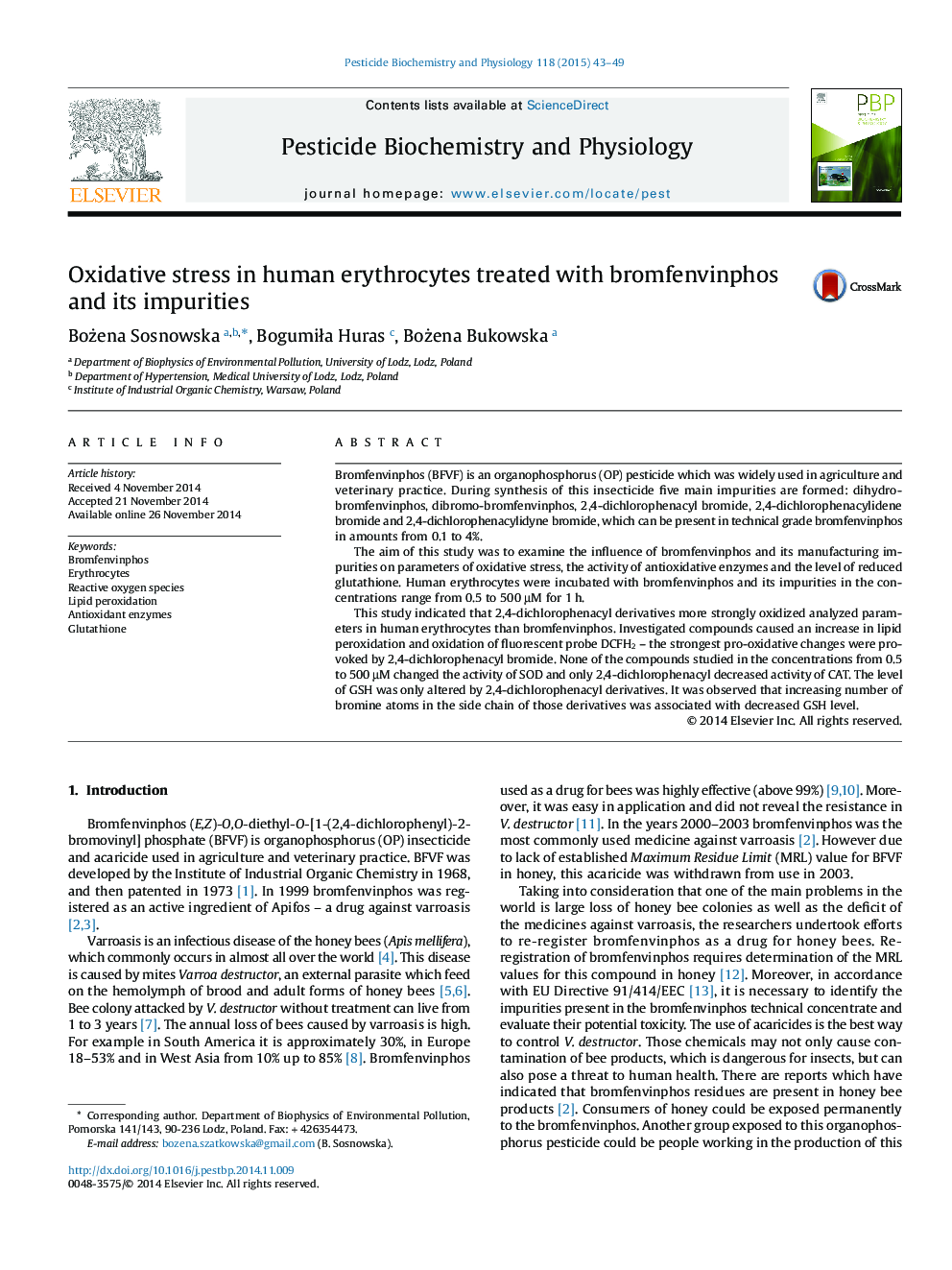| کد مقاله | کد نشریه | سال انتشار | مقاله انگلیسی | نسخه تمام متن |
|---|---|---|---|---|
| 2009180 | 1541781 | 2015 | 7 صفحه PDF | دانلود رایگان |
• The effect of bromfenvinphos and its impurities on erythrocyte oxidative stress was studied.
• The compounds increased ROS level and caused lipid peroxidation at 100 and 500 µM.
• GSH level was changed only by 2,4-dichlorophenacyl derivatives.
• CAT activity was changed only by 2,4-dichlorophenacyl bromine.
• 2,4-dichlorophenacyl derivatives exhibited stronger oxidation than bromfenvinphos.
Bromfenvinphos (BFVF) is an organophosphorus (OP) pesticide which was widely used in agriculture and veterinary practice. During synthesis of this insecticide five main impurities are formed: dihydro-bromfenvinphos, dibromo-bromfenvinphos, 2,4-dichlorophenacyl bromide, 2,4-dichlorophenacylidene bromide and 2,4-dichlorophenacylidyne bromide, which can be present in technical grade bromfenvinphos in amounts from 0.1 to 4%.The aim of this study was to examine the influence of bromfenvinphos and its manufacturing impurities on parameters of oxidative stress, the activity of antioxidative enzymes and the level of reduced glutathione. Human erythrocytes were incubated with bromfenvinphos and its impurities in the concentrations range from 0.5 to 500 µM for 1 h.This study indicated that 2,4-dichlorophenacyl derivatives more strongly oxidized analyzed parameters in human erythrocytes than bromfenvinphos. Investigated compounds caused an increase in lipid peroxidation and oxidation of fluorescent probe DCFH2 – the strongest pro-oxidative changes were provoked by 2,4-dichlorophenacyl bromide. None of the compounds studied in the concentrations from 0.5 to 500 µM changed the activity of SOD and only 2,4-dichlorophenacyl decreased activity of CAT. The level of GSH was only altered by 2,4-dichlorophenacyl derivatives. It was observed that increasing number of bromine atoms in the side chain of those derivatives was associated with decreased GSH level.
Graphical AbstractFigure optionsDownload as PowerPoint slide
Journal: Pesticide Biochemistry and Physiology - Volume 118, February 2015, Pages 43–49
